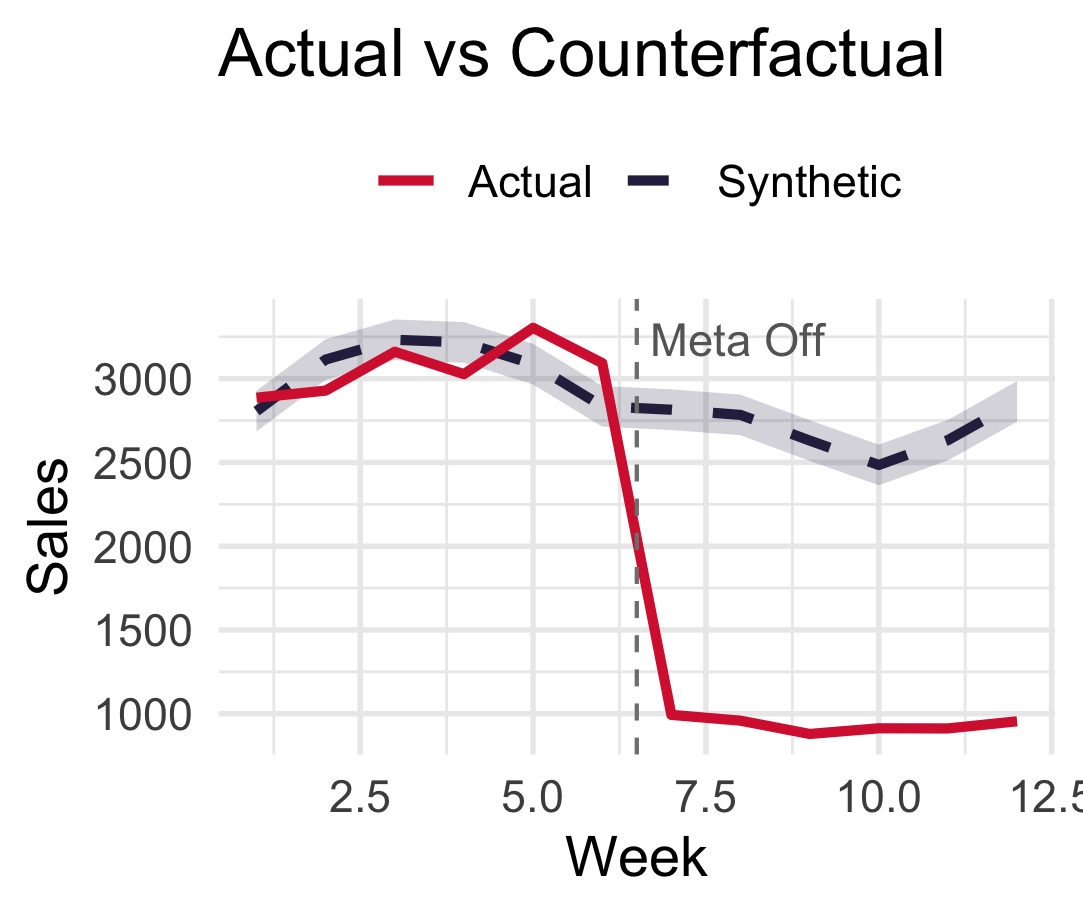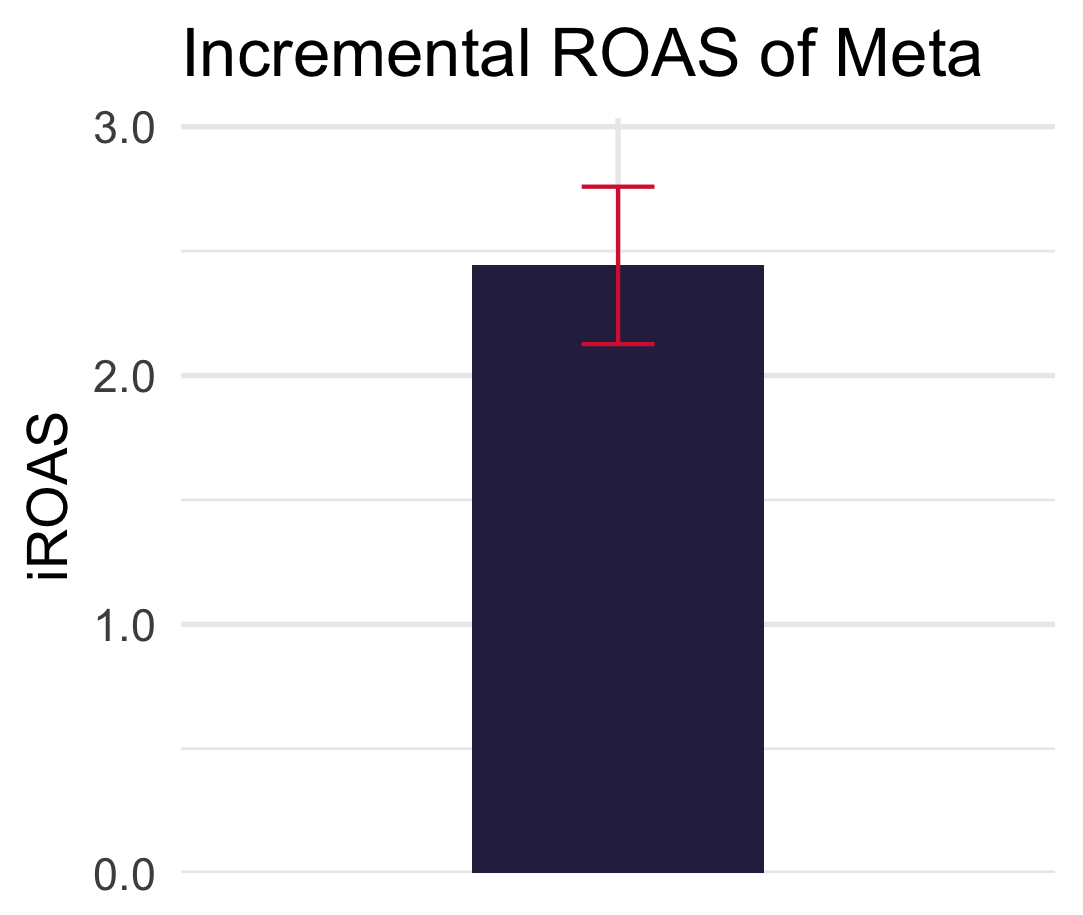From Belief to Proof: Quantifying Meta’s Impact for a Wellness DTC Brand
The Challenge
A VP of Growth at a fast-growing DTC health and wellness brand believed Meta was playing a major role in driving revenue. But internal last-click attribution models weren’t enough to convince the finance team — they needed hard evidence that Meta spend was driving incremental revenue, not just clicks and impressions.
With growth targets ahead and limited budget, the team needed to validate Meta’s true performance to unlock additional investment.
Actual vs Counterfactual
The Approach
Apex Analytics partnered with the brand to design a geo-based incrementality experiment that would isolate the impact of Meta spend:
A power analysis was conducted to determine how many DMAs were needed in the experiment and how long the experiment needed to run for to detect an incremental ROAS of 2.0.
DMAs were assigned into Treatment and Control groups using a re-randomization algorithm to ensure that DMAs were randomly assigned to Treatment and Control groups while also ensuring that the groups are balanced to minimize bias in results
The experiment ran over six weeks across 20 DMAs — 10 Treatment and 10 Control DMAs
Meta ads were paused in a set of test regions, while continuing as normal in matched control regions
Apex used a Synthetic Difference-in-Differences model to estimate a counterfactual of what sales in the Treatment DMAs would have been had Meta spend not been turned off. This counterfactual was then compared to the actual revenue in the Treatment DMAs to estimate the causal effect of Meta on driving revenue.
This approach allowed the team to move beyond last-click attribution and directly measure incremental lift in revenue.
Revenue of Treatment vs Control Groups
The Results
The results were decisive:
Sales dropped significantly in regions where Meta was turned off, compared to the regions where Meta spend ran as usual
Over the six-week period, this translated to a loss of $110,000 in incremental revenue across the Treatment DMAs
Given the spend for this brand, this translated to an incremental ROAS of 2.4 for Meta
The Outcome
The VP of Growth used the results to build a clear business case and secure incremental budget from the finance team. Meta spend was scaled up confidently in the following quarter, backed by statistically validated evidence of performance.
With Apex’s support, the brand moved from internal assumptions and relying on last-click attribution to statistically grounded attribution — and positioned Meta as a growth lever they could now double down on.



